If you’re looking to save money by “cutting the cable”, you’re probably looking for an alternate source of TV programming. Of course there are various boxes and services that you can subscribe to, but there’s a lot of network programming that is available to you for free. All you need to receive high-definition TV programming from local channels is an antenna, and we’ve reviewed several here at The Gadgeteer. Many of the indoor antennas are about the size – and have the appearance – of a plastic placemat for the dining table, with a thick coax cable hanging off them. For best reception, you need to hang them in a window or on your wall near the ceiling. They work, but they don’t usually add to your decor. Mohu has a new antenna, the Curve, which looks almost like a simple sculpture. You can set it on a table, and it looks like it was meant to be there. There are two models of the Curve available: the Curve 30, with a 30-mile reception range, and the Curve 50, with 50-mile reception. I received the Curve 30 for review.
My family and I recently moved from our house to a condo. We’re on the 12th floor of the building, so the Curve 30 will have a very high vantage point, no matter where I place it in my unit. The TV in the master bedroom never had a cable connection at the old house, so I always tried out antennas on that TV. I decided I’d use that same TV again for this test. The bedroom is somewhere between 100-120 feet above the ground, and all the windows are north-facing. I placed the antenna in the window closest to the location of the TV.
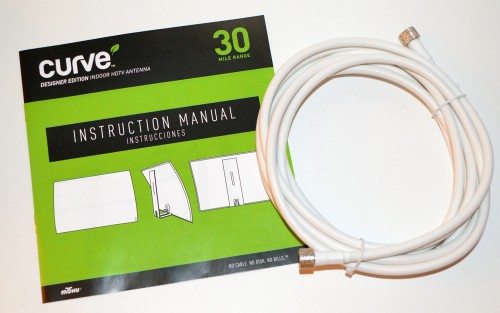 The Curve 30 comes with an installation booklet and a 10-ft coaxial cable with 75-ohm F connectors.
The Curve 30 comes with an installation booklet and a 10-ft coaxial cable with 75-ohm F connectors.
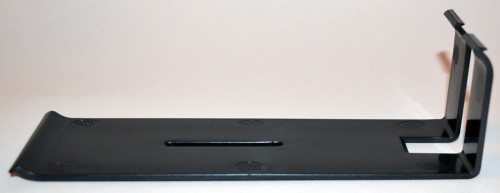 This antenna is not designed to hang on your wall or window glass. It comes with a plastic stand that snaps to the back of the antenna, so you can set it on a tabletop or shelf.
This antenna is not designed to hang on your wall or window glass. It comes with a plastic stand that snaps to the back of the antenna, so you can set it on a tabletop or shelf.
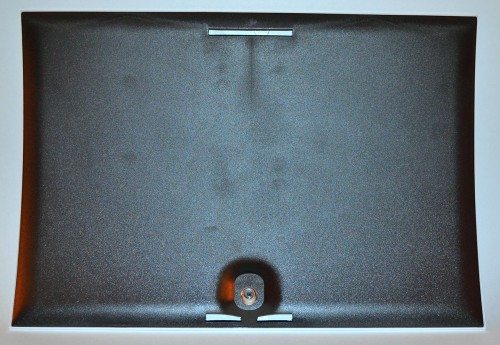 The white areas you see in the black plastic back of the Mohu antenna are the attachment points for the stand. The coax connector is located at the middle bottom of the Curve.
The white areas you see in the black plastic back of the Mohu antenna are the attachment points for the stand. The coax connector is located at the middle bottom of the Curve.
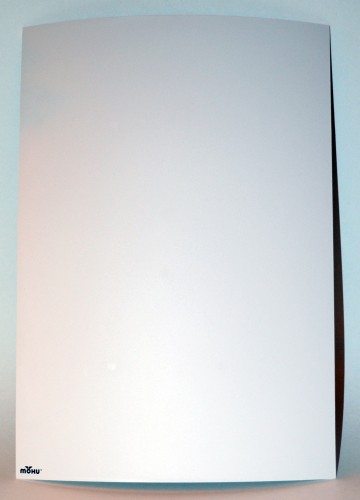 The Curve is designed to stand horizontally, so I don’t quite understand the placement of the Mohu logo. I positioned the Curve vertically in this picture so you could see the logo. Other than this small logo, the Curve’s front is plain, white plastic. With the stand attached and with the Curve in the horizontal orientation for use, the Mohu logo is at the bottom right. The antenna measures about 11.5″ long X 8.25″ tall X 2″ deep with the stand attached.
The Curve is designed to stand horizontally, so I don’t quite understand the placement of the Mohu logo. I positioned the Curve vertically in this picture so you could see the logo. Other than this small logo, the Curve’s front is plain, white plastic. With the stand attached and with the Curve in the horizontal orientation for use, the Mohu logo is at the bottom right. The antenna measures about 11.5″ long X 8.25″ tall X 2″ deep with the stand attached.
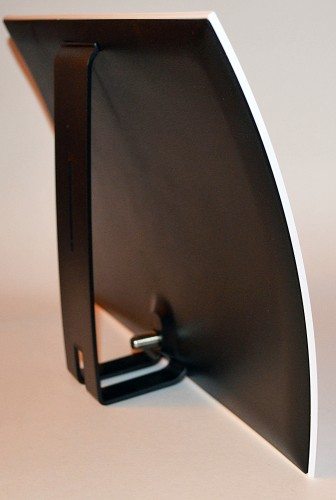 Here it is with the stand attached.
Here it is with the stand attached.
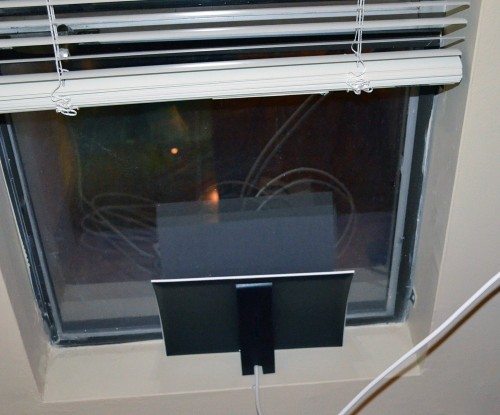 And here it is sitting in my window. The windows in the condo are literally floor-to-ceiling. The antenna is sitting about 4″ above the floor in my bedroom, but I still think reception should be fine because my floor is about 100 feet or so up in the air.
And here it is sitting in my window. The windows in the condo are literally floor-to-ceiling. The antenna is sitting about 4″ above the floor in my bedroom, but I still think reception should be fine because my floor is about 100 feet or so up in the air.
According to Mohu’s website, these are the TV stations I should receive at my location. After I had my TV search for stations, it found all of these except for 8-1 and 8-2. That’s no loss to me, because I haven’t watched Fox since David Duchovny left The X-Files. In addition to the stations Mohu said I should receive, I also receive two different sets of Public TV programming, three extra stations at channel 16 (I see home shopping channels are now broadcasting over-the-air), and a few other channels, including a low-power local channel from another county north of my location.
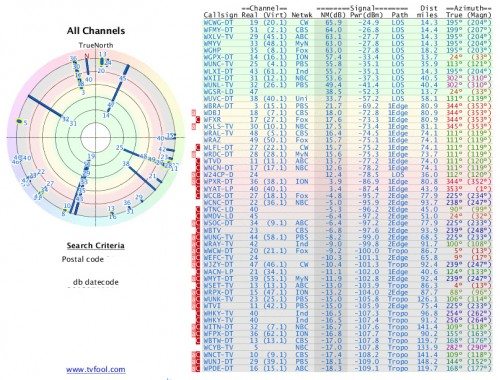 And these are the stations that TV Fool‘s website said I might receive. Channels shown in the green columns should received by a set-top antenna, yellow columns are probably will require an attic-mounted antenna, and the red will probably require a roof-mounted antenna for reception. I received all the channels shown in TV Fool’s green band, plus the low-power station that doesn’t show up anywhere on the list. Surprisingly, I also receive the local NBC station, which I have been able to receive with some indoor HDTV antennas, but never reliably. That station is placed to the south-southeast of my location, and I was surprised I could receive the channel at all, and I’m very pleased at how good the reception is. Some of the more distant stations have some pixelation, but I’m not going to watch that weird little local channel from the nearby county anyway.
And these are the stations that TV Fool‘s website said I might receive. Channels shown in the green columns should received by a set-top antenna, yellow columns are probably will require an attic-mounted antenna, and the red will probably require a roof-mounted antenna for reception. I received all the channels shown in TV Fool’s green band, plus the low-power station that doesn’t show up anywhere on the list. Surprisingly, I also receive the local NBC station, which I have been able to receive with some indoor HDTV antennas, but never reliably. That station is placed to the south-southeast of my location, and I was surprised I could receive the channel at all, and I’m very pleased at how good the reception is. Some of the more distant stations have some pixelation, but I’m not going to watch that weird little local channel from the nearby county anyway.
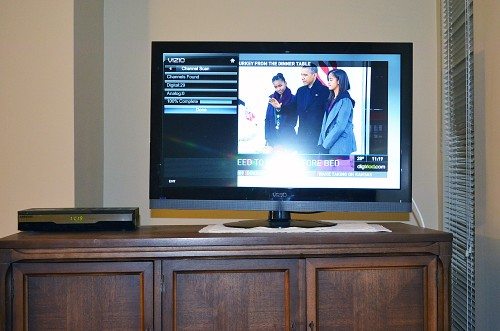 Click to enlarge the above image, and you’ll see that my Vizio’s tuner found 29 digital channels. Almost every one of them come in as clear and clean as the station you can see behind the TV’s setup menu.
Click to enlarge the above image, and you’ll see that my Vizio’s tuner found 29 digital channels. Almost every one of them come in as clear and clean as the station you can see behind the TV’s setup menu.
I guess my location above the treetops has advantages that lower buildings and houses may not have, but I still think the Mohu Curve 30 performs admirably, and it doesn’t even require an amplifier to work this well. I’d like to see what the Mohu Curve 50 could pull in at my new home.

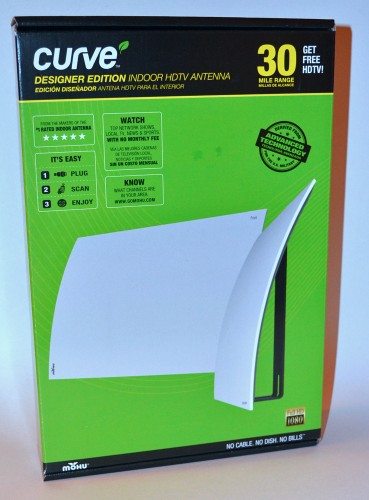
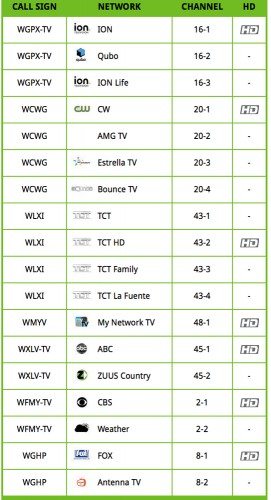


Gadgeteer Comment Policy - Please read before commenting
One of my biggest pet peeves about antenna manufactures are that they push “HDTV” or “DIGITAL” as a function of the antenna. Antenna are tuned to receive (or transmit) in relatively narrow band of FREQUENCY.
The content sent on these frequencies is inconsequential. Only the ability of the antenna to receive these signals matters. VHF channels operate around 50MHz-221Mz. Most manufactures will tune the antenna about midway between the upper and lower frequencies to give you a reasonably reliable antenna for the entire spectrum. UHF channels exist around 450MHZ-900MHz. These will also be tuned right in the middle as well. When choosing an antenna do some research on it’s tuned ranges. If you live in an area that primaraly uses VHF signals you should not buy the top of the line UHF antenna, you are throwing money away. Get an antenna designed for the VHF range. The Reverse is also true for UHF.
Some manufactures will get around this range problem by enclosing two separate loops one for VHF and one for UHF each tuned to the correct frequencies.
Antenna’s that can “tune” (Computerized, or has a dial) either electronically or mechanically to different frequencies do this by artificially adjusting the length of the antenna/coil, or adjusting the impedance of the antenna. This can help clean up a signal, but an artificially tuned antenna will always be less efficient then a physically tuned antenna. However an artificially tuned antenna will still be more efficient then simply using an antenna tuned for the wrong frequency range. So if you live in an area that uses VHF and you get a tuning antenna designed for the UHF range, you would be better off just getting a cheap UHF antenna. Again also true for the reverse.
I’m glad to see that although this antenna is marketed as “HDTV” the company does not seam to be pushing the complete BS I see in many other “HDTV/DIGITAL” must have solutions out there. The price is reasonable. Seeing people market these horrible expensive “HDTV” or “DIGITAL” Antennas drives me up a proverbial wall. People are paying hundreds of dollars for nothing more then properly tuned coat hanger.
Ok my RANTS over.
Correction:
Section should read.
So if you live in an area that uses VHF and you get a tuning antenna designed for the UHF range, you would be better off just getting a cheap [[VHF]] antenna. Again also true for the reverse.
The reason that NBC is hard to pick up is that it is 90 degrees from the rest of your stations. That means that it’s in a null when the antenna is pointed to pick up the stations from 24 and 195 degrees. Also, the stations from the south have to come all the way trough the building to get to the antenna. Fox is to the south. Placing the antenna higher above the floor could easily make the difference since there would be fewer obstructions such as beds and dressers. If you like classic TV programming “AntennaTV” is a great addition.
We tried a window antenna a few years ago. It was dismal at best. I was a bit hesitant to try this but finally ordered a Curve 50 Amplified. It came today. Took about 5 minutes to set up. It is amazingly good! We live far out in the country and at least 30 miles from any TV signal (the 30 miles is through mountains!). Now have 2 Public TV stations, Fox and CBS. Thumbing nose at DirecTV exorbitant prices right now. Thanks for the tip.